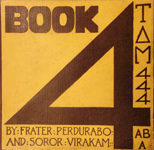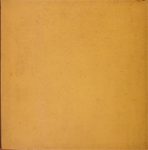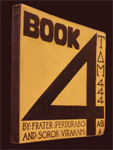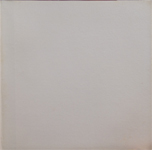100th
MP

|
THE
100th
MONKEY
PRESS |
|
|
|
Limited Editions by Aleister Crowley & Victor B. Neuburg |
|
Bibliographies |
|
Download Texts
»
Aleister
Crowley
WANTED !!NEW!!
|
|
BOOK 4 - PART I |
|
Image Thumbnails |
||||||||||||||||||||||||||||||||||||||||||||||||||||||||||||||||||||||||||||||||||||||||||||
|
Title: |
Book 4 (Part I). |
|
||||||||||||||||||||||||||||||||||||||||||||||||||||||||||||||||||||||||||||||||||||||||||
|
Variations: |
|
|||||||||||||||||||||||||||||||||||||||||||||||||||||||||||||||||||||||||||||||||||||||||||
|
Publisher: |
Wieland and Co., 3 Great James Street, Bedford Row, London, W.C.1 |
|||||||||||||||||||||||||||||||||||||||||||||||||||||||||||||||||||||||||||||||||||||||||||
|
Printer: |
|
|||||||||||||||||||||||||||||||||||||||||||||||||||||||||||||||||||||||||||||||||||||||||||
|
Published At: |
London.1 |
|||||||||||||||||||||||||||||||||||||||||||||||||||||||||||||||||||||||||||||||||||||||||||
|
Date: |
No earlier than fall 1912.4 |
|||||||||||||||||||||||||||||||||||||||||||||||||||||||||||||||||||||||||||||||||||||||||||
|
Edition: |
First Edition, First Issue. |
|||||||||||||||||||||||||||||||||||||||||||||||||||||||||||||||||||||||||||||||||||||||||||
|
Pages: |
x + 94 + 2 pages advertisements.2 |
|||||||||||||||||||||||||||||||||||||||||||||||||||||||||||||||||||||||||||||||||||||||||||
|
Price: |
Priced at four groats or one shilling net.3 |
|||||||||||||||||||||||||||||||||||||||||||||||||||||||||||||||||||||||||||||||||||||||||||
|
Remarks: |
Publisher’s address is given as 3 Great James Street, Bedford Row, London, W.C.1 Published under the pseudonym of Frater Perdurabo (Aleister Crowley) and Soror Virakam (Mary d’ Este-Sturges). |
|||||||||||||||||||||||||||||||||||||||||||||||||||||||||||||||||||||||||||||||||||||||||||
|
Pagination:2 |
|
|||||||||||||||||||||||||||||||||||||||||||||||||||||||||||||||||||||||||||||||||||||||||||
|
Contents: |
- Part I - Meditation - Asana - Pranayama; and its Parallel in Speech, Mantrayoga - Yama and Niyama - Pratyahara - Dharana - Dhyana - Samadi
Illustrations: - Christ Saviour of the World (Frontispiece). - A Good Position for Meditation. |
|||||||||||||||||||||||||||||||||||||||||||||||||||||||||||||||||||||||||||||||||||||||||||
|
Author’s Working Versions: |
|
|||||||||||||||||||||||||||||||||||||||||||||||||||||||||||||||||||||||||||||||||||||||||||
|
Other Known Editions: |
||||||||||||||||||||||||||||||||||||||||||||||||||||||||||||||||||||||||||||||||||||||||||||
|
Bibliographic Sources: |
|
|||||||||||||||||||||||||||||||||||||||||||||||||||||||||||||||||||||||||||||||||||||||||||
|
Comments by Aleister Crowley: |
She was very unsatisfactory as a clairvoyant; she resented these precautions. She was a quick-tempered and impulsive woman, always eager to act with reckless enthusiasm. My cold scepticism no doubt prevented her from doing her best. Ab-ul-Diz himself constantly demanded that I should show “faith” and warned me that I was wrecking my chances by my attitude. I prevailed upon him, however, to give adequate proof of his existence and his claim to speak with authority. The main purport of his message was to instruct me to write a book on my system of mysticism and Magick, to be called Book Four, and told me that by means of this book, I should prevail against public neglect. It saw no objection to writing such a book; on quite rational grounds, it was a proper course of action, I therefore agreed to do so. But Ab-ul-Diz was determined to dictate the conditions in which the book should be written; and this was a difficult matter. He wanted us to travel to an appropriate place. On this point I was not wholly satisfied with the result of my cross-examination. I know now that I was much to blame throughout. I was not honest either with him, myself or Virakam. I allowed material considerations to influence me, and I clung—oh triple fool!—to my sentimental obligations towards Laylah. We finally decided to do what he asked, though part of my objection was founded on his refusal to give us absolutely definite instructions. However, we crossed the passes in a sleigh to Chiavenna, whence we took the train to Milan. In this city we had a final conversation with Ab-ul-Diz. I had exhausted his patience, as he mine, and he told us that he would not visit us any more. He gave us his final instructions. We were to go to Rome and beyond Rome, though he refused to name the exact spot. We were to take a villa and there write Book Four. — The Confessions of Aleister Crowley. New York, NY. Hill and Wang, 1969. Pages 677-678. ______________________________
The idea
was as follows. I was to dictate; Virakam to transcribe, and if
at any point there appeared the slightest obscurity—obscurity
from the point of view of the entirely ignorant and not
particularly intelligent reader; in a word, the average
lower-class man in the street—I was to recast my thoughts in
plainer language. By this means we hoped to write a book well
within the compass of the understanding of even the simplest-minded seeker after spiritual enlightenment.
Part Two deals with the principles and practice of Magick. I
explained the real meaning and modus operandi of all the
apparatus and technique of Magick. Here, however, I partially
failed. I was stupid enough to assume that my readers were
already acquainted with the chief classics of Magick. I
consequently described each Weapon, explained it and gave
instructions for its use, without making it clear why it should
be necessary at all. Part Two is therefore an wholly admirable
treatise only for one who has already mastered the groundwork
and gained some experience of the practice of the art. — The Confessions of Aleister Crowley. New York, NY. Hill and Wang, 1969. Page 680. |
|||||||||||||||||||||||||||||||||||||||||||||||||||||||||||||||||||||||||||||||||||||||||||
|
Reviews: |
That hater of mystery-mongering, the late Swami Vivekanandar, gave us one of the clearest expositions of Raja Yoga extant. Frater Perdurabo, with virile forcefulness, follows in the footsteps of his worth predecessor. In taking his readers through the various stages of Raja Yoga, he develops his theme with a terseness and lucidity all too rare in this field of literature. He begins with the assertion of "a secret source of energy which explains the phenomenon of genius" (in this case religious genius). Naturally the attainment of Samadhi is not unattended with danger, and the adventure is not lightly to be entered on. In Raja Yoga there is no room for half measures: one must push on relentlessly to success—failure means disaster. The effect of Samadhi on the mind is tremendous. "It is the most vivid and catastrophic of all experiences. But the result of the most transitory flash (of Samadhi or Union) repays a thousandfold the pains taken to attain it." But of union in its higher stages we are told that only a few characteristics can be specified, and that in language that forms no image in the mind. Those who experience it fail to bring back any adequate memory. In it "the All is manifested as the One: it is the universe freed from its conditions. Each part has become the whole, and phenomenon and noumenon are no longer opposed." Such is a brief sketch of a noteworthy shillingsworth, which no student of Raja Yoga should be without." —Occult Review, date unknown. ______________________________
Book Four. By Frater Perdurabo and Soror Virakam. (Wieland & Co., 33, Avenue Studios, Fulham Road, S.W.) The price of this book is not three pence but one shilling. One is “a” and “a” is one—according to Qabalistic enumeration. So, in some ways this book may be described as A.1. Inside we learn that the price is four groats or one shilling net. Hitherto we had thought that a groat was worth four pence. Evidently the odd groat represents a discount of one-fourth of the gross price, which you can claim when paying the 3 groats or one shilling net. It is noticeable that everything so far as practicable is “on the square,” and made subservient to 4. The pages, for instance, are printed on forms 4 inches by 4 inches. Presumably the publisher, in sending this book to us for review, was under the impression that the unlimited genius and talent at our disposal embraced an expert knowledge of Voodoo, Juju, Qabalah, and Magic. Indeed, we learn that “Book Four” is but the precursor of a twin volume on “Magick”—with a K. Although the authorship of this exotic exudation of esoteric exegesis is attributed, on the title, to Frater Perdurabo and Soror Virakam, a note at the beginning tells us that “This book is intentionally not the work of Frater Perdurabo,” as “Experience shows that his writing is too concentrated, too abstruse, too occult, for ordinary minds to apprehend.” We should shay sho ! The book, then consists of a record of some disjointed fragments of his (Frater Perdurabo’s) casual conversation (duly noted by Soror Virakam) which it is hoped “may prove alike more intelligible and more convincing.” So mote it be ! So we set our ordinary minds to work with the idea of apprehending.
After a poem by “Crowley Aha” (Ha-ha !) and a photograph of a gentleman, whose hair and beard seem to be shouting for the attention of the barber’s shears; and who appears to be indulging in a Sitz Bath on the shore of some Grecian Isle—or who otherwise might easily be mistaken for the “Wild Man of Borneo” when “out of town”—we come to Part I, entitled “Meditation, or the way of attainment to Genius or Godhead, considered as a development of The Human Brain.” In 18 pages of “Preliminary Remarks” we get the foundation of the argument and the premises of what is to follow. We learn that the geniuses who were the accredited founders of the world’s great religions had one point in common; they went away beyond human ken (into the wilderness presumably) where they discovered the secret source of energy which explains the Phenomenon of Genius. On their return, with this tremendous power to back them up, they started the revolutions which upset the existing evil state of things and made multitudes of disciples. Anyone by following out definite rules can go and do likewise. An indication of the method is given in the succeeding chapters on Asana, Pranayama, Yama and Niyama, Pratyahara, Dharana, Dhyana, and Samahdi. (The Indian names of certain mental states and conditions.) These are described in plain English, and evidently are most adapted to the requirements of those who can afford to leave the hustle of modern conditions of life, and enter into a retirement favourable to the indulgence of remaining for hours in some particularly painful and tortuous attitudes, in the attire which Nature has bestowed at birth (vide photo of a gent who seems to be emulating a foetus in its pre-natal moments). Can it be F. Perdurabo? Finally, students are invited to offer themselves as probationers for instruction, and must possess certain books, which can be secured on payment of the modest sum of Six guineas, $31, or 156 francs. What ho!
A clever book, and well worth a shilling, as it gives you a “run for your money!” Thus, the short cut to the attainment of “Genius.” We hope we may be pardoned for humbly suggesting that a cheaper and quite as practical a cut, is to become a regular, faithful subscriber and reader of The African Times and Orient Review. —The African Times and Orient Review, Feb.-Mar. 1913, Frater Ad Infinitum. |
|||||||||||||||||||||||||||||||||||||||||||||||||||||||||||||||||||||||||||||||||||||||||||









